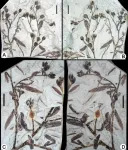In findings published in the May 20, 2021 issue of the New England Journal of Medicine, investigators presented new evidence of the effectiveness of reducing SBP to a target range of less than 120 mm Hg.
Jackson T Wright Jr. MD, PhD., and Mahboob Rahman MD, investigators from University Hospitals Cleveland Medical Center and Case Western Reserve University School of Medicine, played a lead role in the design, conduct, analyses and publication of the SPRINT trial. UH and CWRU coordinated one of the five Clinical Center Networks (CCNs) across the country selected to conduct the trial that had recruited more than 9,300 participants.
"This final report of the findings from SPRINT, now including all cardiovascular and mortality trial events, confirms the benefit of more aggressive BP lowering compared the previously recommended target of less than 140/90 mmHg," said Dr. Wright, Director of the Clinical Hypertension Program at UH and Professor Emeritus of Medicine at CWRU.
SPRINT was a randomized controlled clinical trial sponsored by the National Heart, Lung, and Blood Institute, part of the National Institutes of Health. Beginning in late 2009, it enrolled more than 9,000 participants at least 50 years old who had SBP 130 to 180 and had increased cardiovascular disease risk. The NIH ceased randomly assigned treatments in 2015, when data was presented to the Data and Safety Monitoring Board showing treatment to SBP of less than 120 decreased the rate of a composite cardiovascular disease (CVD) outcome by 25 percent and the rate of all-cause death by 27 percent.
Researchers reported these findings in 2015, but continued to collect data into July 2016. The current paper confirms and enhances the earlier findings.
SPRINT's primary outcome was lower risk of having one of a composite of different types of cardiovascular disease outcomes related to blood pressure. These included heart attack, an acute coronary syndrome not resulting in a heart attack, stroke, acute heart failure, or death from cardiovascular disease.
The final results showed the risk of the primary outcome of the trial was decreased 27 percent and death from all causes was decreased by 25 percent in the group treated to less than 120 mm Hg compared to the group treated to less than 140 mm Hg.
"One criticism of the original SPRINT findings was that, of the components of the primary outcome, only heart failure and death due to CVD were significantly lower in the intensively treated group," Cora E. Lewis, MD, Professor and Chair of the Department of Epidemiology in the University of Alabama at Birmingham School of Public Health, and primary investigator of the study. "The final results found that risk of heart attack, along with heart failure, and death from CVD, was significantly lower in the group treated to less than 120, and the risk of the primary outcome excluding heart failure was still significantly lower in the more intensively treated group."
SPRINT also collected data on safety of the interventions. The investigators anticipated that serious adverse events, including hospitalizations overall, as well as hospitalizations and emergency room visits for specific conditions of interest, might be related to more intensive treatment of blood pressure with medicines. The final paper reports that overall serious adverse events did not differ, but there were more cases of some of the conditions of interest in the group treated to SBP of less than 120, including low blood pressure, fainting and acute injury to the kidneys, which usually resolved within one year. Falls leading to injury did not differ.
Hypertension, high blood pressure, is a hugely important risk factor for the leading cause of death worldwide: cardiovascular disease or CVD, said Dr. Rahman. "CVD has been the number one killer in the U.S. for decades, even in 2020, when we were dealing with COVID-19, which was the number three killer that year in the U.S. Elevated blood pressure is the leading contributor to preventable deaths worldwide of 67 risk factors studied (including tobacco)." "The take-home message from SPRINT is to talk to your doctor about your blood pressure to determine a good goal for you based on your overall cardiovascular disease risk. Then work with your doctor to achieve that goal," said Dr. Rahman.
Prior to the SPRINT trial, research had shown that treating high blood pressure helped decrease risk of CVD, but the optimum SBP goal was unknown. In 2007, a group of experts in high blood pressure research suggested that determining the appropriate goal of SBP to reduce the risk of heart disease was of the utmost importance in preventing complications from hypertension.
"We know a lot about how to prevent and treat hypertension and SPRINT continues to greatly expand this knowledge, including the benefits of treatment on the heart, kidney and brain," said David Goff, M.D., Ph.D., director of the Division of Cardiovascular Sciences at NHLBI. "As we implement what we know, more research is still needed to develop more effective prevention strategies for hypertension, improve its monitoring and control, and reduce the large health disparities associated with this disorder. Research teams supported by the NIH are continuing to work on these challenges."
INFORMATION:
Nearly half of adults age 20 years and older in the United States have high blood pressure, which is defined as SBP of 130 or more or diastolic blood pressure (the lower number) of 80 or more.
World Hypertension Day was May 17, 2021, recognizing how important high blood pressure is to the health of the world's population.
In addition to primary sponsorship by the NHLBI, SPRINT was co-sponsored by the NIH's National Institute of Diabetes and Digestive and Kidney Diseases, the National Institute of Neurological Disorders and Stroke, and the National Institute on Aging.
Institutions involved with the SPRINT study: University of Alabama at Birmingham; University Hospitals Cleveland Medical Center and Case Western Reserve University; National Heart, Blood and Lung Institute; University of Utah School of Medicine; University of Tennessee Health Science Center; Wake Forest School of Medicine, and Tulane University School of Public Health and Tropical Medicine.
About University Hospitals / Cleveland, Ohio
Founded in 1866, University Hospitals serves the needs of patients through an integrated network of 22 hospitals (including 5 joint ventures), more than 50 health centers and outpatient facilities, and 200 physician offices in 16 counties throughout northern Ohio. The system's flagship academic medical center, University Hospitals Cleveland Medical Center, located in Cleveland's University Circle, is affiliated with Case Western Reserve University School of Medicine. The main campus also includes University Hospitals Rainbow Babies & Children's Hospital, ranked among the top children's hospitals in the nation; University Hospitals MacDonald Women's Hospital, Ohio's only hospital for women; University Hospitals Harrington Heart & Vascular Institute, a high-volume national referral center for complex cardiovascular procedures; and University Hospitals Seidman Cancer Center, part of the NCI-designated Case Comprehensive Cancer Center. UH is home to some of the most prestigious clinical and research programs in the nation, including cancer, pediatrics, women's health, orthopedics, radiology, neuroscience, cardiology and cardiovascular surgery, digestive health, transplantation and urology. UH Cleveland Medical Center is perennially among the highest performers in national ranking surveys, including "America's Best Hospitals" from U.S. News & World Report. UH is also home to Harrington Discovery Institute, part of The Harrington Project for Discovery & Development. UH is one of the largest employers in Northeast Ohio with 28,000 physicians and employees. Advancing the Science of Health and the Art of Compassion is UH's vision for benefitting its patients into the future, and the organization's unwavering mission is To Heal. To Teach. To Discover. Follow UH on LinkedIn, Facebook @UniversityHospitals and Twitter @UHhospitals. For more information, visit UHhospitals.org.
About Case Western Reserve University
Case Western Reserve University is one of the country's leading private research institutions. Located in Cleveland, we offer a unique combination of forward-thinking educational opportunities in an inspiring cultural setting. Our leading-edge faculty engage in teaching and research in a collaborative, hands-on environment. Our nationally recognized programs include arts and sciences, dental medicine, engineering, law, management, medicine, nursing and social work. About 5,100 undergraduate and 6,700 graduate students comprise our student body. Visit case.edu to see how Case Western Reserve thinks beyond the possible.




